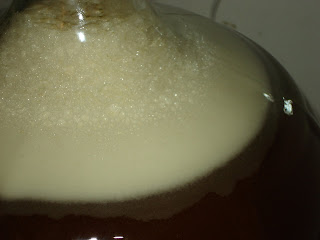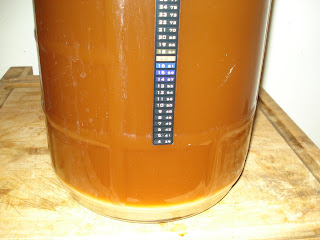Milling and Harvesting
It was a big weekend for homebrew production. I built a malt mill and harvested my cascade hops! I based my malt mill on the barebones version of Jack Schmidling's MaltMill. 
I had to build the table and the hopper, but the money I saved in doing it myself, I was able to buy an electric drill to motor the whole contraption. I used medium density fiberboard for the table and the sides of the hopper. I used a lightweight smooth fiberboard with staples for the hopper. I added dropped edges on the table so it fits snugly on top of a bucket. I bolted the mill onto the table with 1/4" bolts and the hopper attaches to the top with 1/4" bolts.

The hop harvest was outstanding. We clipped the vine down and brought it over to the deck where we began picking. There were so many flowers it was quite a chore for two people. I did not expect this quantity! The net product was half a paper grocery bag.

























